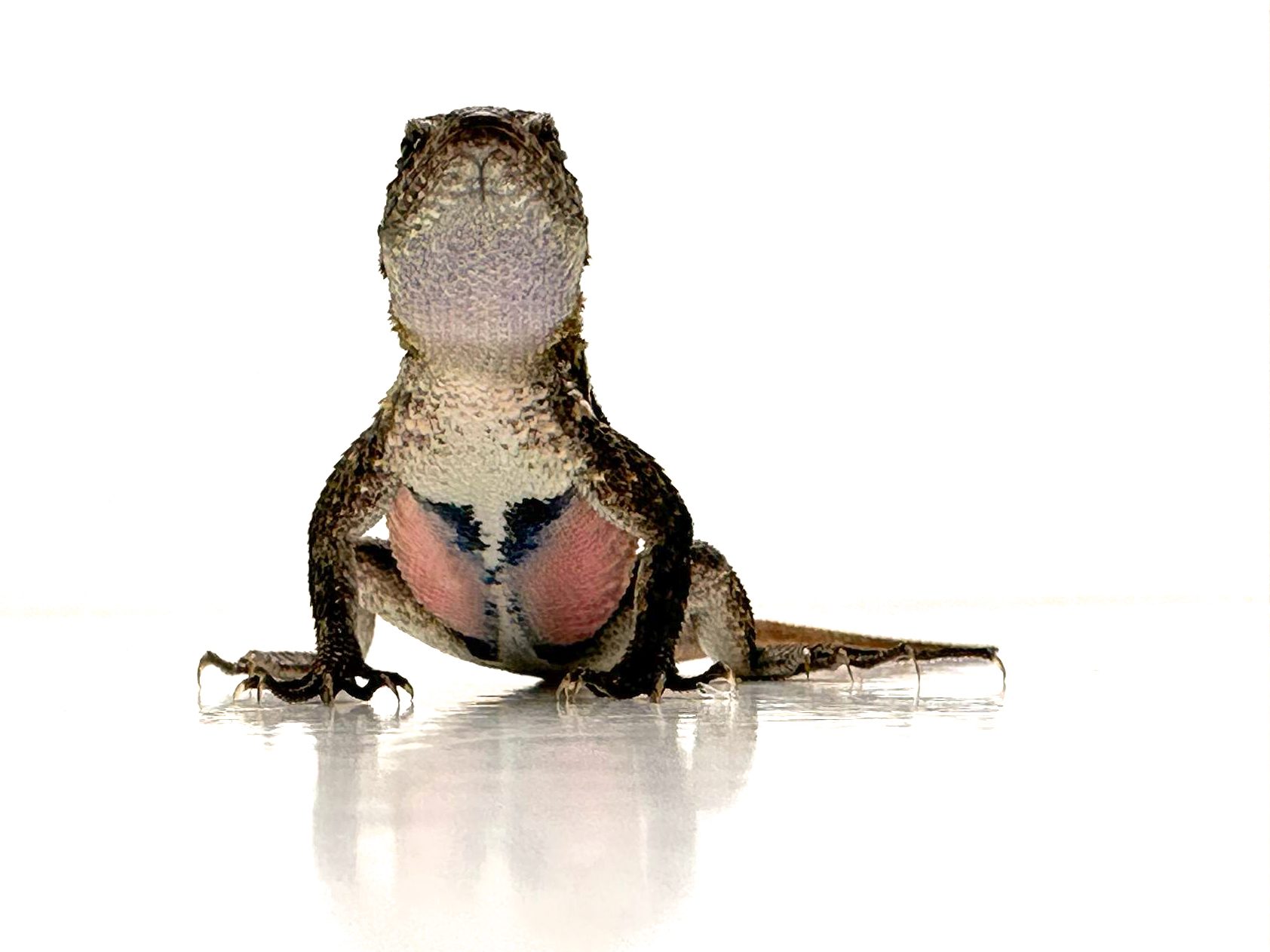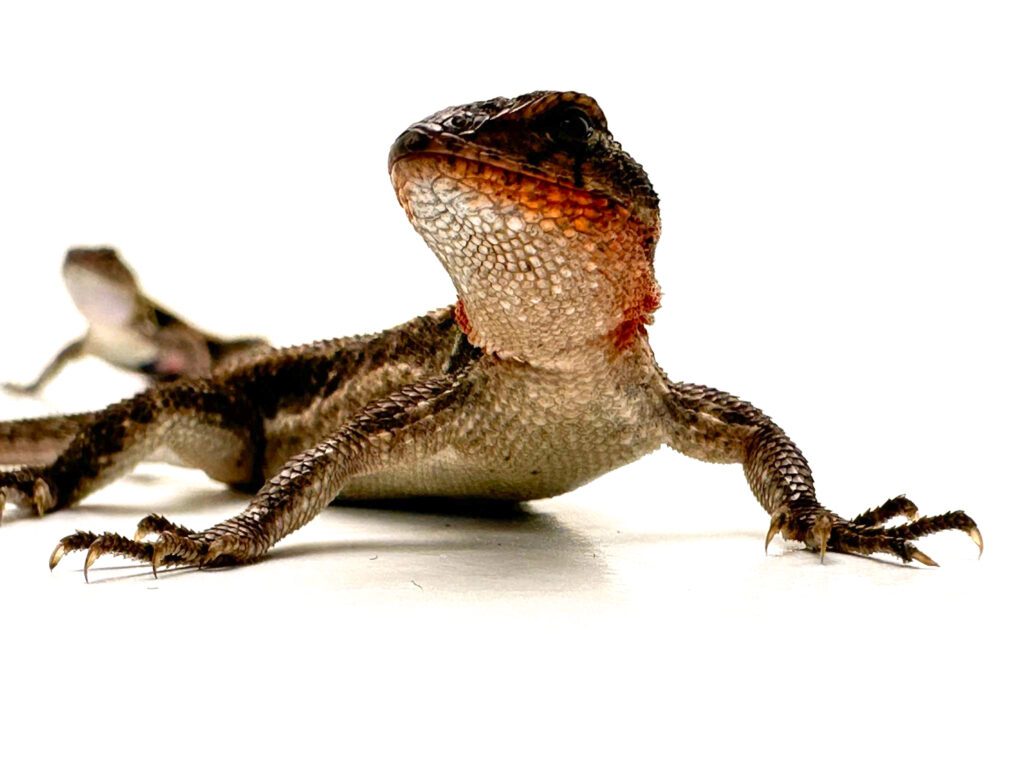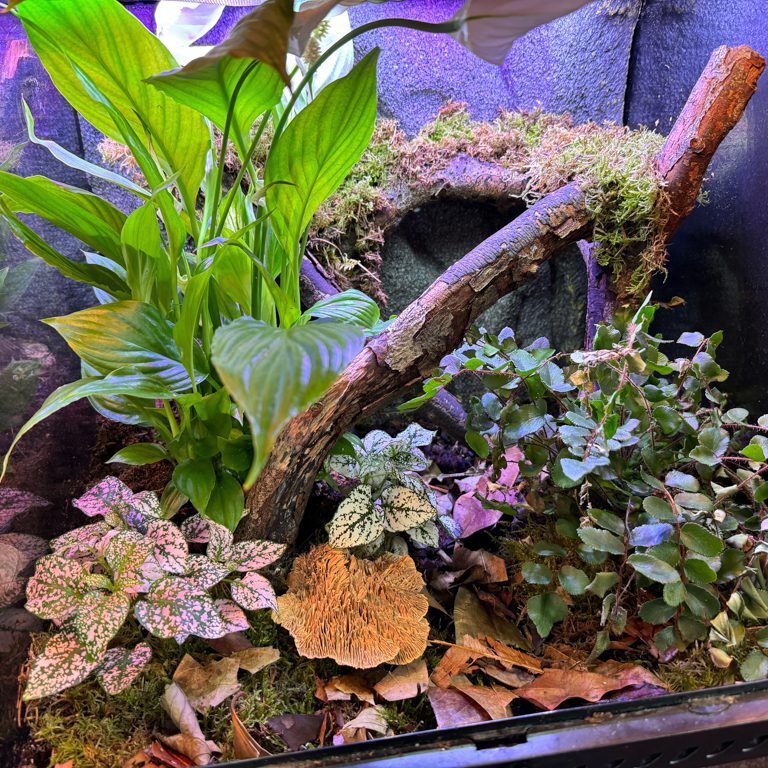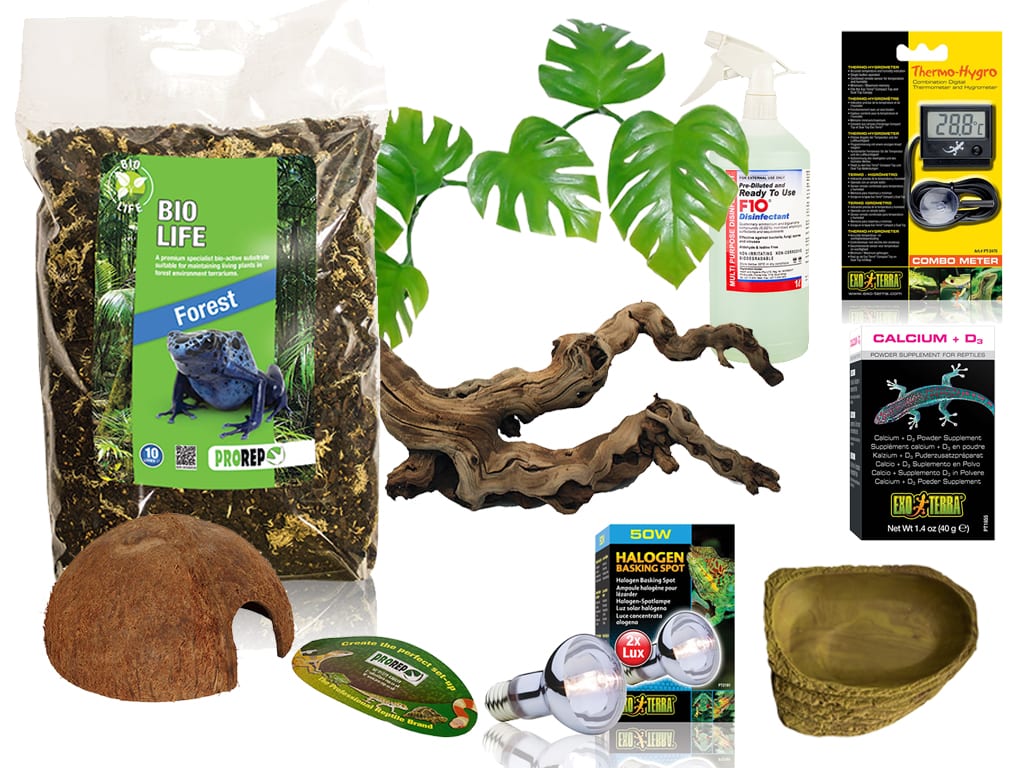
Pink Bellied Swift
Care Sheet

Pink bellied swifts (Sceloporus variabilis) are a small to medium sized lizard originating in America – from North to South and Mexico.
They are named after their appearance as the males have pink bellies which can be seen when they sit with their head up.
Females are not as colourful but are still rather pretty.


HANDLING YOUR LIZARD
Pink Bellied Swifts are generally fairly tame lizards who can get used to handling over time, which may take a few weeks to a few months.
If you decide you would like to handle your swift, you should take certain steps such as approaching slowly and supporting the body properly to prevent causing stress or injury to the animal.
As with any new reptile pet, we recommend handling within the enclosure to start off with to allow the pet to acclimate to its new environment and reduce stress. To handle your lizard properly, gently place your hand inside the tank, support its body from underneath, and avoid grabbing the tail or legs to prevent injury or stress. Gradually increase the handling sessions to a few times a day for a short while. Once your lizard is comfortable with you, you can take it out, but ensure to stay close to the tank and handle on the floor to prevent any accidents.
If your lizard is stressed, you will notice it trying to get away and darting around the tank, indicating that it is not in the right state for handling. If your lizard is stressed, it’s best not to handle it at that time to avoid causing further stress or harm to the animal.
Avoid handling your lizard just before or just after you feed as it can cause stress and may lead to the lizard refusing to eat.


SEXING YOUR LIZARD
Pink belly swifts are fairly easy to sex due to the colour difference in sexes.
Males have 2 oval pink shapes on their bellies which can be seen either by watching them when they sit with their heads up, or gently holding them and turning upside down. Females have a much paler undercarriage, which is all 1 colour.


HEALTH CHECK
Eyes- Eyes are clear with no sign of puss, inflammation or milky appearance. Eyes are free of black spots in corners which could signify mites.
Skin- The skin is clear of shed and there are no cuts or scrapes on the lizards skin. Occasionally locusts or crickets can nip the skin of the lizard. Always remove live food that is not eaten after the lizards meal to prevent further bites and stress which can stop your lizard eating.
Limbs- All the limbs are moving correctly and the lizard is able to walk and move normally. Lizards can suffer from a condition called MBD (metabolic bone disease). This occurs when lizards do not have enough calcium D3 and causes their bones to grow abnormally, eventually restricting their movements. MBD cannot be reversed so always dust livefood with calcium twice a week to avoid MBD occurring.
Weight- Many lizards in captivity are overweight which is generally a result of the lizard being fed on worms alone or fed too often. Feed your lizards a mixed diet of locusts, crickets, roaches, mealworms and pinkie mice to adults as a treat..








ADVICE FOR LIFE!
When you buy your Pet & Housing from us!
Priority Boarding | Advice available face to face, via Telephone, Facebook Chat, Email, Instagram


